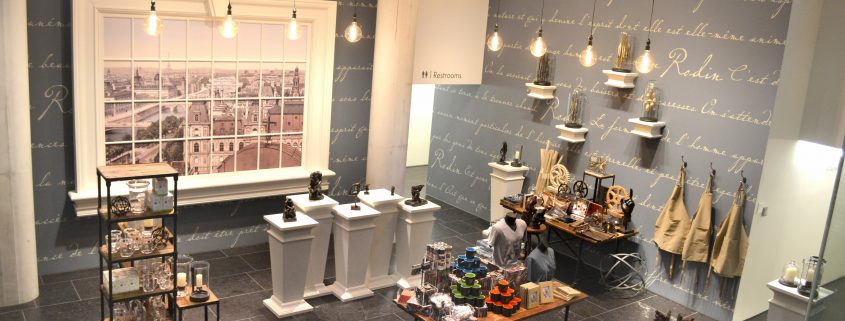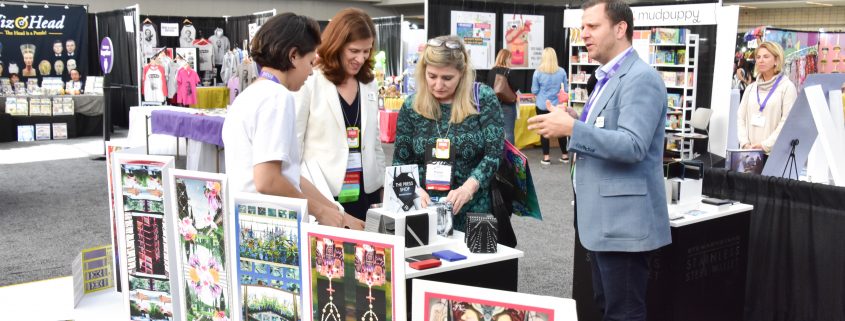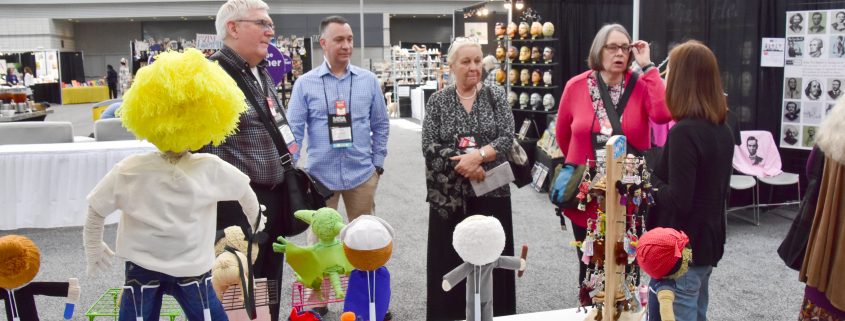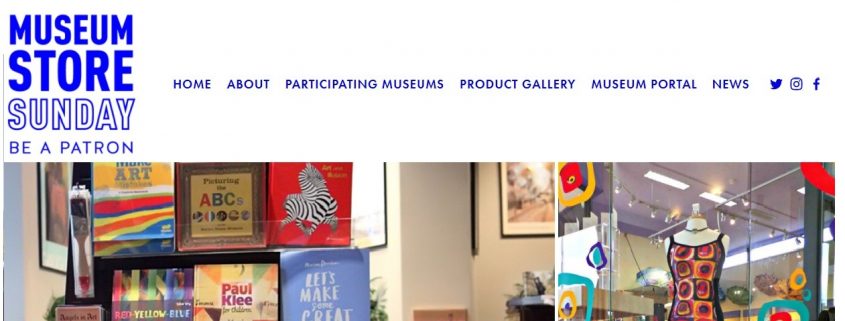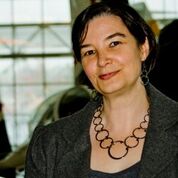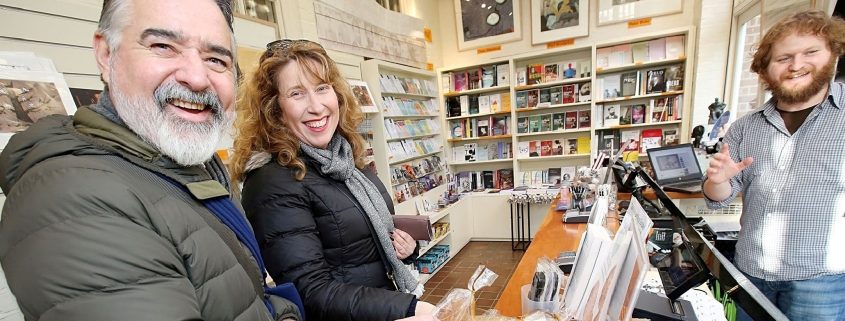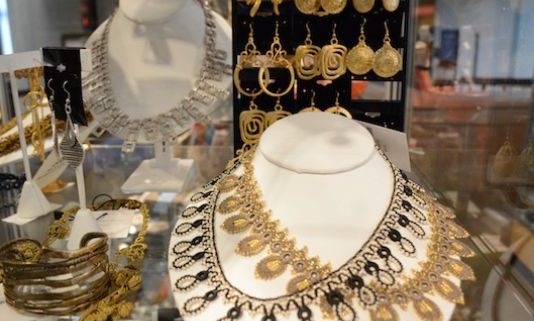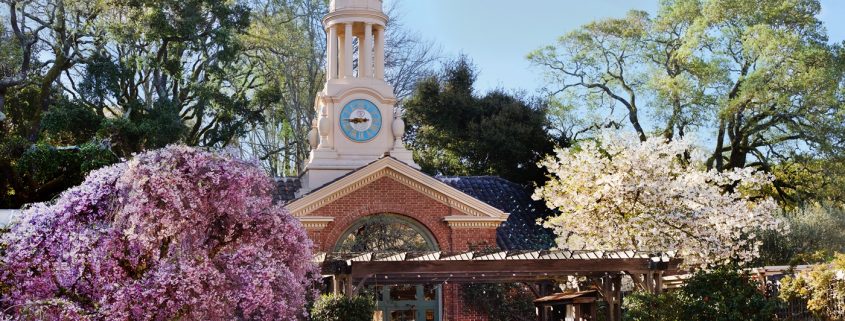January 8, 2018
Name: Kelly Jones
Job Title: Owner / Designer / Maker
Business Name: Wraptillion
Location: near Seattle, Washington
Interviewed by: Blue Anderson of the Columbia River Maritime Museum
Where did you grow up?
I grew up north of San Francisco, in the small town of Fairfax (which got its first traffic light after I moved away for college.) And yes, I’ve spent a lot of time in Bay Area museums, botanical gardens, and other amazingly cool places!
What does your company do? How long has your company been in existence?
Wraptillion started in 2009, when I began to sell the modern industrial jewelry I was making.
As an artist, I see the beauty in everyday things you might never have noticed, especially hardware. My jewelry appeals to others who see things a little differently, and who value the intersections of art and science, engineering and design.
To show off that beauty, I take stainless steel hardware that’s used in car transmissions, airplane hydraulics, motorcycle wheel hubs, and lots of other engineering applications, and I link it together into articulated, wearable patterns, using chainmaille techniques. These materials are what make space shuttles strong and lightweight, and they’re easy to care for (like your stainless silverware.) My titanium ear wires are as hypoallergenic as titanium hip replacements, so most people with metal allergies won’t have a reaction to them. And the same flexibility that makes chainmaille great for armor joints makes my jewelry comfortable to wear (and a little edgy, too.)
What is your role within your company? Have you changed positions within the company? Worked for another company?
Wraptillion is my one-woman show, and always has been. I manage my workload by keeping my focus on my line of art jewelry, plus a little custom work, and by focusing on wholesale sales. It’s much more efficient for me to fill one order for a store than to try to sell, make, and ship many pieces to many individual customers. I’ve never worked for another jewelry company, but I grew up working in my mother and grandmother’s stores, which both sold jewelry, and attending trade shows with them, so I’ve spent some time on the other side of the counter.
Describe the life journey that brought you to this career (i.e. tell our readers about your interesting life so far …)
I’m the daughter of a calligrapher/gift shop owner and an engineer/musician, both very creative people who see beauty everywhere; my brother is a printmaker and tattoo artist. I was lucky to have role models early on for business as well as art. I grew up making jewelry out of macaroni and everything else I could find, and I kept stretching and growing that hobby as I went to school and became a librarian. I’ve picked up techniques here and there, and incorporated them into my work, but since no one else really does what I do, experimentation and sheer stubbornness have been my best teachers. When I finally pulled my hardware ideas together and decided the result was too cool to keep to myself, I began selling my work. It was discovered by some local nonprofit galleries, and then was a finalist in the NICHE awards. Eventually I found my way to museum stores and the MSA.
Tell us about the first sale you ever made to a museum or non-profit institution… what was it? Who did you sell it to?
The FriendShop in Seattle’s Central Library (a Rem Koolhaas building and architectural destination) was my first non-profit wholesale sale, and I’ve been working with them ever since. They sell book-related products but also design and architecture-focused work from a very small shop whose walls slide on tracks in the library’s floor. (Talk about seeing things differently!) I’ve done custom designs for them featuring an engraved portion of the library’s exterior, as well as my standard lines. To our surprise and delight, the custom pieces were incredibly popular with library staff and locals, who appreciated high-quality work that they could wear every day without feeling like a tourist.
Did you feel like a partner in that process? Are you still?
Absolutely! My job is to connect what I know about my work, and the custom work I can do, to what buyers know about their customers. I’m the expert in my work, but they’re the expert in theirs; the intersections are where the magic happens.
For the FriendShop’s custom example above, we went back and forth together to get a design and colors that really spoke to their audience, to get the signage right, and to make sure everyone knew why these pieces were special. And it paid off for both of us: when they put the designs in the case, their local customers weren’t deciding whether to buy, they were deciding which color they wanted, because they’d heard what was coming, they’d weighed in on decisions, and they felt like partners too.
What is unique about your product or production technique or design or other aspect? What would the MSA Membership really want to know about you?
My jewelry comes out of a true intersection between art and engineering, and it celebrates that intersection in a way I don’t see very often. Engineers, mechanics, and pilots immediately recognize my materials, and appreciate the engineering it takes to create a design whose structure comes from tension and aspect ratios, not welding or glue. The pieces in my Heat Patina collection are heated until the surface of my metals oxidizes, bringing out unexpected colors that are a little different every time. Modern art and design lovers appreciate my focus on unadorned hardware: nothing’s extraneous, the materials are industrial and utilitarian, and yet the designs feel classic, wearable, and truly beautiful.
This means that my work fits into a wide range of missions. I’ve worked with transportation museums who want to grow into the artisan jewelry market, as well as art museums known for their armor collections who want to add a different take on chainmail to their cases. Both science and art museums are looking to add STEAM-inspired designs and repurposed materials done well. And engineered jewelry can be part of what welcomes women to your technology exhibit or career day.
There is a lot of turmoil currently in the retail world. Can you tell us one exciting trend that you’ve noticed? Are you taking advantage of it?
What I see dominating the retail world is the focus on the race to the bottom: more broadly available products, with competition on who can sell them for the lowest price. But what I see customers currently responding to is high-quality products that speak to them in a unique way. When they know it’s perfect for them, the decision isn’t about price. It’s about how to make that purchase happen.
There’s no way I can compete with big box stores on jewelry prices – and I don’t want to! I’m more interested in the markets they aren’t serving, the ones that know my work is perfect for them, and who value it. Around a third of the customers for my work are men buying gifts, who recognize my materials; that connection makes their gift special. Another third is women who don’t buy or wear other jewelry, because it’s too fussy, too feminine, makes their ears itch, or just doesn’t feel like them. Others respond to my particular aesthetic, and tell me there’s nothing else like it.
You know what the big box stores can’t compete with? A particular artist’s vision. Filling that particular niche for someone who never found their perfect pair of earrings before. It’s a great time to be an artist, and not just another commodity. I want my work to be in the company of other art, so my work will never be as broadly available, and it will never be part of that race to the bottom. It’s more efficient for me to sell fewer pieces of higher-quality, higher-priced jewelry than a higher volume of lower-quality, lower-priced jewelry. Yes, it can take a customer a little longer to make that first purchase – but they’ll come back again and again, because there’s nothing else like it.
There is a lot of turmoil currently in the retail world. Can you tell us one thing that keeps you up at night? What steps will you take in light of that?
Supply chain disruption is my big fear. The hardware I use is still produced in the US by one company, but I worry about global trends, so I keep tabs on my options too. There are fewer than you’d expect, but it isn’t keeping me up at night.
What are some concrete goals for your next three years working with members of the Museum Store Association? How do you see MSA helping you achieve that?
As a Vendor Advisor for the Pacific Northwest Chapter, I’m committed to bring the vendor perspective to my chapter’s board, as well as being a resource for all members. I enjoy finding ways vendors and buyers can help each other out, learn from each other, and have fun working together. We have so much in common, including many of the same struggles, that it seems a waste not to share our experiences with each other.
Beyond that, I’d love to dig deep and discover more specifically what working artists and artisans like me can bring to MSA, and vice versa, beyond creating and selling great products. I feel like that’s a relatively unexplored connection in two communities with a lot in common. For instance, I’d love to do a talk for high school students on the business side of art, or a STEAM demonstration. And I think it would be wonderful for MSA to create a basic tip sheet and/or resource list for artists who’d like to approach museum stores. I imagine we all get the same questions, so why not share the work of answering them?
Inspired by MSA Next, I’d also like to help think about what the next generation of vendor members will bring, how they’ll find MSA, and what they’ll value in this partnership. I’ve been part of some interesting mentorship models with the American Craft Council, among others. Someone once told me my superpower was connecting people, and with great power comes great responsibility, so if you have ideas on this too (or are already working on efforts I haven’t heard about yet,) let’s chat!
Have you ever attended an MSA Chapter meeting? Tell us about that experience.
Yes, lots! For my first few, it was hard for me to see where I fit in and where I could be useful, as a non-voting member. But over the years the Pacific Northwest Chapter has come up with more natural connection points, including the very popular product share, where every member brings one product from their store or their line to tell other members about. It’s a fun way to learn and share in a non-sales setting.
How long have you been a MSA vendor member? How did you connect with the MSA?
I’ve been a MSA vendor member since 2015. I’d heard about the association before that when researching trade shows, but at that point the general consensus among the artisan and maker communities I was part of was that most MSA Expo buyers were looking for lower-priced work with very broad appeal, and that wasn’t my niche. Still, I kept the organization on my radar, and as I began to work with more museum stores and to do more custom work, I asked Mary Christensen at the Museum of Flight about it. She invited me to a PNW Chapter networking event, so I could get a better feel for it before deciding for myself. And, here I am!
Which museums do you currently work with?
I’m currently working with MSA buyer members at the Museum of Flight, the Edsel and Eleanor Ford House, the Currier Museum of Art, the National Czech and Slovak Heritage Museum and Library, the Pittock Mansion, and (as you know!), the Columbia River Maritime Museum.
Why did you agree to be a MSA Vendor Advisor for your regional chapter? Are you working on specific projects right now?
I agreed to be a MSA Vendor Advisor because I saw ways that buyer and vendor members could work even better together, and to help give other vendor members something I didn’t have when I joined: a friendly resource for private questions at the chapter level, so that chapter meetings and public forums aren’t the only place a new vendor member can ask questions. (Yes, please feel free to email me that question you’ve always wanted to ask to me, even if you’re in a different chapter — but know that your chapter probably has a Vendor Advisor now too!) Also, I’m not shy about speaking up.
Most vendor members come into MSA with buyer connections, but those are business relationships too. Yes, we find out the answers to our questions eventually, but I worry that there are missed opportunities when members have to take the long way around to learn things. It’s nice to be able to ask a fellow vendor instead, but vendor members might not already know each other.
Right now, I’m involved in two PNW Chapter projects:
The first is co-teaching an education session at the PNW Chapter’s January meeting with Beth Shafer of the Museum of Flight on quick social media tips, focusing on using Instagram at events, pop-ups, and on the sales floor. We felt it would be useful for buyers and for vendors, and is an area where we can help each other out.
The second is proposing a volunteer booth sitter role for MSA Forward in DC, and helping to coordinate it if the chapter is interested in trying it. The idea is to give our chapter’s buyer and non-exhibiting vendor members a simple way to offer assistance to our chapter’s exhibiting vendor members by covering a quick break. As a vendor who usually exhibits alone, I think this would be a really friendly gesture, as well as a fun way for buyers and vendors to connect in a non-sales situation.
Do you have a hobby?
I have something better than a hobby: monthly exploration days! As a self-taught, constantly evolving artist, I push myself to think differently and stay out of ruts by exploring techniques and activities I’ll never bring to my day to da y work. Most recently, I took a blacksmithing workshop and learned to hammer red-hot steel from a woman my height (I’m 5’1”), in a working studio that looks nothing like the magazines. I love seeing what happens when I take the time to try something, and I love discovering what I can learn to do. Let me know if you have suggestions for what I should try next!
y work. Most recently, I took a blacksmithing workshop and learned to hammer red-hot steel from a woman my height (I’m 5’1”), in a working studio that looks nothing like the magazines. I love seeing what happens when I take the time to try something, and I love discovering what I can learn to do. Let me know if you have suggestions for what I should try next!
Kelly Jones handcrafts Wraptillion jewelry to celebrate the beauty of everyday industrial objects. By linking American-manufactured steel hardware with titanium, she creates lightweight, striking jewelry that never needs polishing. Every piece made in her studio near Seattle, Washington is designed to show your edge and fit your life. She has been a member of MSA since 2015.
Photo credits: Kelly Jones, guest artist in the Museum of Flight’s booth at Geek Girl Con; Clustered Circles necklace at the Museum of Flight; Banister earrings at the Pittcock Mansion; Architecture earrings at the FriendShop Seattle Central Library and Boeing 727 hydraulics at The Museum of Flight’s Restoration Center. Photographer: Susan Brown.





 ent to come up with a graphic that would allow our visitors to imagine that they were looking out onto the city of Paris. We adapted a color for the walls from colors used inside the exhibition for a natural flow from the end of the exhibition to the beginning of our shop. We brought in tools, aprons, and purchased fixtures that had a very urban, industrial feel. We will normally sell off our fixtures, at a markup, to reimburse ourselves for this type of expense. From the Edison type lighting we hung from the tracks to the quote on the wall, we tried to pull the entire look together so that the whole team understands the look and feel we are trying to achieve. Everything goes onto a story board for reference and to cement it into place.
ent to come up with a graphic that would allow our visitors to imagine that they were looking out onto the city of Paris. We adapted a color for the walls from colors used inside the exhibition for a natural flow from the end of the exhibition to the beginning of our shop. We brought in tools, aprons, and purchased fixtures that had a very urban, industrial feel. We will normally sell off our fixtures, at a markup, to reimburse ourselves for this type of expense. From the Edison type lighting we hung from the tracks to the quote on the wall, we tried to pull the entire look together so that the whole team understands the look and feel we are trying to achieve. Everything goes onto a story board for reference and to cement it into place.

